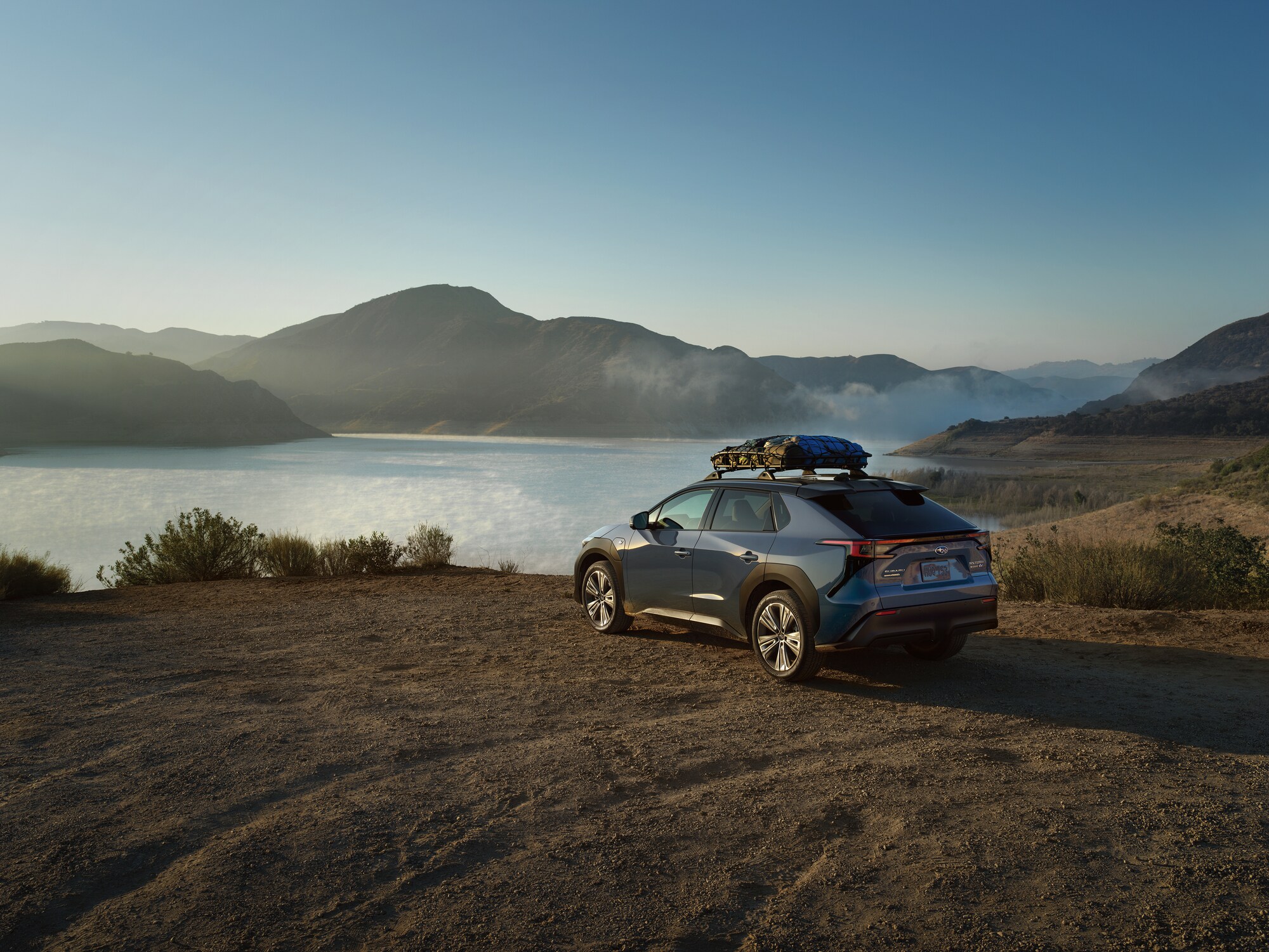Subaru Electric Vehicles

Why Switch To An Electric Vehicle (EV)?
Electric vehicles are future-forward vehicles with impressive performance and capabilities. If you've never driven an EV, schedule a test drive with our team to experience the unique, quiet acceleration that an EV delivers. There are many benefits to choosing an electric vehicle over a traditional gas or even hybrid vehicle that have nothing to do with its eco-friendly aspects. They are excellent vehicles in their own right, and the thrilling driving experience and convenience of being able to charge at home are significant benefits.
* Although every reasonable effort has been made to ensure the accuracy of the information contained on this site, absolute accuracy cannot be guaranteed. This site, and all information and materials appearing on it, are presented to the user "as is" without warranty of any kind, either express or implied, including but not limited to the implied warranties of merchantability, fitness for a particular purpose, title or non-infringement. All vehicles are subject to prior sale. Price does not include applicable tax, title, and license. Not responsible for typographical errors.
**The arrival timeline is an estimate. It may vary due to circumstances beyond Subaru’s or the retailer’s control.
Electric Vehicles Are Eco-Friendly
Electric vehicles are powered by large rechargeable battery packs. In EVs like the Subaru Solterra, you can travel more than 200 miles before plugging in. They emit zero harmful fumes and are incredibly efficient at using the energy created without losing most of it as heat or highly toxic carbon monoxide gas like gas-burning vehicles. While concerns have been raised about the impact of the battery lifecycle, the benefits of reducing emissions to zero far outweigh battery recycling issues.

Electric Vehicles Can Save You Money
Electric vehicles cost more upfront but have so few maintenance requirements that they cost less over the long term. With reduced maintenance and eliminating surging gas prices as part of your transportation needs, switching to an EV will save you money.
Electric Vehicles Are Convenient to Charge
Imagine never needing to stop at a gas station. Most EV owners plug in at the end of the day and wake up to a fully charged vehicle, especially if they upgrade to a Level II home charger. There are flexible options for recharging at home or on the go:
- Level I: 120-volt connection possible through a regular wall outlet at home or wherever your portable charger can reach a plug. The slowest but safest way (for battery longevity) to charge your vehicle with no extra equipment required.
- Level II: 240-volt connections are possible in residential homes with a professional installation or at public charging stations. Many public charging stations offer Level II chargers near businesses or worksites, allowing drivers to regain most of the range in an afternoon or a workday.
- DC Fast Charger: DC fast charging is only available at public charging stations as residential areas cannot support fast charging. Not all EVs have fast charging capabilities, but the Subaru Solterra can regain most of its usable range in under 30 minutes.

Electric Vehicles Are Fun to Drive
Electric vehicles send all the power directly to the wheels, resulting in nearly instantaneous torque and rapid acceleration. They are fun to drive. many new EVs, like the Subaru Solterra, offer various driving modes and all-wheel drive to handle changing road conditions or light off-roading.
Frequently Asked Questions
Charging an EV is as easy as plugging in any other rechargeable device. EVs like the Subaru Solterra come with a portable charging cable, so you will be able to charge at any regular wall outlet or stop by a public charging station to regain miles on the go.
The Subaru Solterra does not qualify for the federal Clean Vehicle Tax Incentive. However, Courtesy Subaru of Chico can pass on the $7,500 credit for new leases, and California residents can take advantage of numerous incentives and rebates to purchase an EV and install a Level II charger in their home.
Hybrid vehicles are mostly gas with an electric motor to boost power and improve fuel efficiency. Plug-in hybrid vehicles have a gas engine and electric motors as well, but their battery packs are larger and rechargeable. Unlike hybrid vehicles, they can provide a short electric-only range in between charging sessions. Electric vehicles have no gas engine and get their power solely from large, rechargeable battery packs that must be recharged and maintained at a safe range so you don't run out of charge before you can get home or to a public charging station.
The Subaru Solterra has a max range of 228 miles.
EVs need very little maintenance. You can expect tire rotations every 7,500 to 10,000 miles and multipoint inspections. Eventually, EVs need tire replacements, brake services, and fluid top-offs for coolant and windshield wiper fluid.







